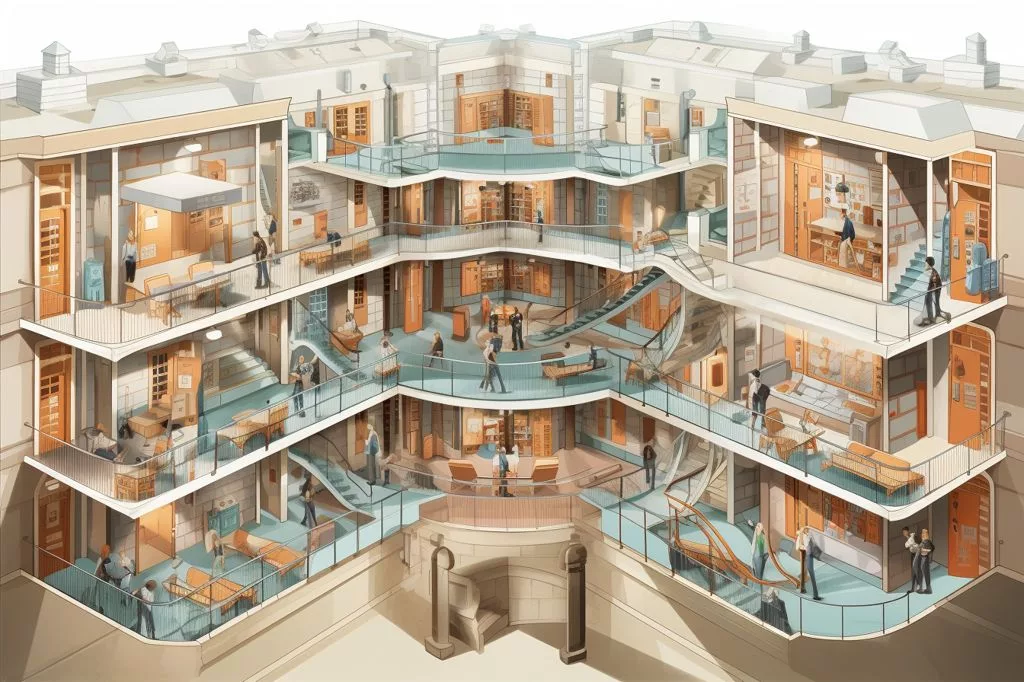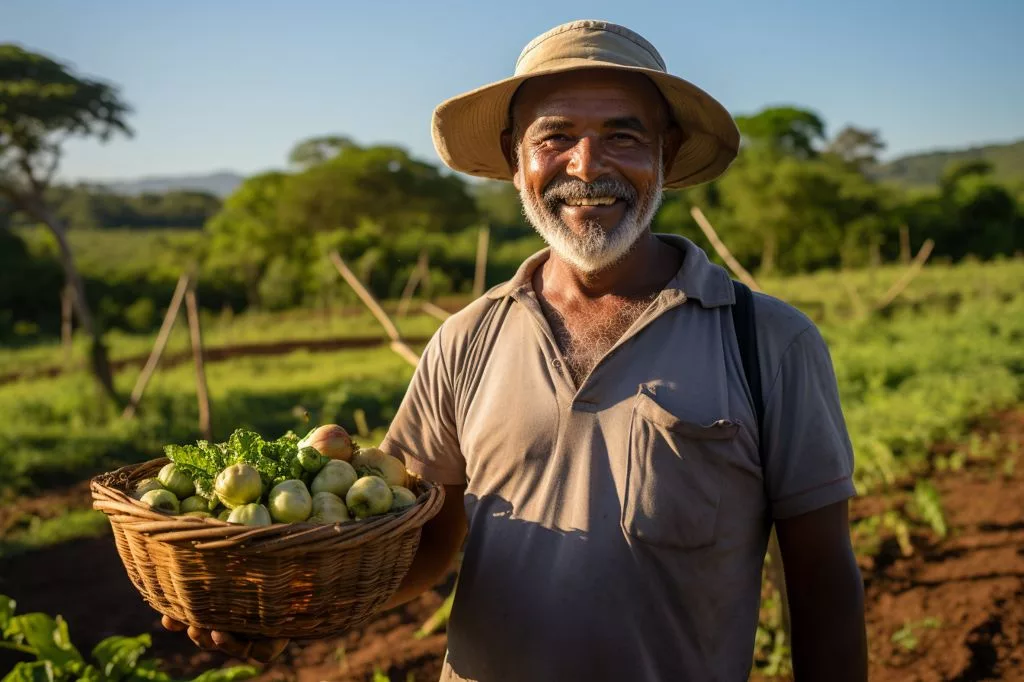The Klerksdorp Prison renovation project is an extensive initiative aimed at upgrading facilities and enhancing living conditions for inmates. The project, which is expected to be completed by 2025, includes improving accessibility for individuals with disabilities, modernizing the sewer system, replacing damaged baths and cisterns, and making electrical and civil engineering advancements. Minister Sihle Zikalala recently visited the construction site, highlighting the government’s commitment to ensuring successful and efficient execution of all projects under the Siyahlola program. The Klerksdorp Prison renovation project is an inspiring example of how public works projects can generate lasting, positive change within a community.
What is the Klerksdorp Prison renovation project?
The Klerksdorp Prison renovation project aims to upgrade facilities and enhance living conditions for inmates, including increasing accessibility for individuals with disabilities, modernizing the site’s sewer reticulation system, and replacing damaged baths and cisterns. The project will also involve electrical and civil engineering advancements to boost the prison’s overall efficiency and align it with contemporary correctional institution standards. The project is expected to be finalized by 2025 and is part of the Siyahlola program focused on supervising ongoing construction projects within the department.
Minister Sihle Zikalala’s Inspection of the Klerksdorp Prison Project
On October 17th, 2023, Minister Sihle Zikalala, who leads the Department of Public Works and Infrastructure, conducted a visit at the Klerksdorp Prison to assess the progress of the extensive renovation project. The ambitious initiative aims to upgrade prison facilities and enhance living conditions for inmates. Expected to be finalized by 2025, this project is a crucial component of the Siyahlola program, focused on supervising ongoing construction projects within the department.
Klerksdorp Prison, situated in Klerksdorp, was previously an outdated facility desperately requiring modernization to meet the demands of an advanced and progressive society. The extensive renovation project exemplifies the government’s dedication to inclusive, humane and efficient correctional facilities. It represents a broader vision for a just society that respects the dignity and rights of all its citizens, including those who are incarcerated.
Comprehensive Upgrades and Improved Accessibility
The project’s extensive scope addresses multiple aspects of the prison’s infrastructure and facilities. A primary objective of the renovation is to increase accessibility for individuals with disabilities. By modifying existing facilities, the project intends to establish an environment that addresses the specific needs of this frequently overlooked population.
Moreover, the renovation involves replacing the prison’s roof and ceiling to enhance the safety and structural integrity of the building. The project will also concentrate on modernizing the site’s sewer reticulation system, which, upon completion, will significantly improve overall hygiene and sanitation within the prison.
To ensure a comfortable living environment for inmates, the project entails replacing damaged baths and cisterns, as well as repainting both the interior and exterior walls. Additionally, a temporary kitchen will be established to supply nourishment for the inmates throughout the construction period.
Electrical and Civil Engineering Advancements
The renovation project goes beyond structural enhancements by incorporating electrical and civil engineering work, which will dramatically boost the prison’s overall efficiency. These upgrades will update the facility to align with contemporary correctional institution standards.
Minister Zikalala’s visit emphasizes the significance of the Klerksdorp Prison renovation project. As the head of the Department of Public Works and Infrastructure, his presence reinforces the government’s commitment to ensuring successful and efficient execution of all construction projects under the Siyahlola program.
The Klerksdorp Prison renovation project epitomizes the Siyahlola program’s spirit, which aims to develop and improve public infrastructure for the benefit of all citizens. By visiting the construction site, Minister Zikalala showcases his dedication to monitoring the progress of these projects and confirming that they remain on schedule for timely completion.
A Testament to Innovative Design and Construction
The project also serves as a demonstration of how inventive approaches to design and construction can convert outdated facilities into modern, accessible spaces that cater to today’s society’s diverse needs. The Klerksdorp Prison renovation is an inspiring example of how public works projects can generate lasting, positive change within a community.
The Klerksdorp Prison’s transformation also relates to a wider vision of an inclusive society that considers the needs and rights of all its citizens, including those incarcerated. By emphasizing accessibility, sanitation, and efficient infrastructure, the renovation highlights the importance of humane and dignified living conditions for everyone.
In conclusion, Minister Zikalala’s visit to the Klerksdorp Prison illuminates the essential work being done to enhance public infrastructure and the lives of those housed within these facilities. The ongoing renovation project is a testament to the impact of innovative design and construction and its role in creating a more equitable, inclusive society for all.
1. What is the Klerksdorp Prison renovation project?
The Klerksdorp Prison renovation project aims to upgrade facilities and enhance living conditions for inmates, including increasing accessibility for individuals with disabilities, modernizing the site’s sewer reticulation system, and replacing damaged baths and cisterns.
2. When is the Klerksdorp Prison renovation project expected to be completed?
The Klerksdorp Prison renovation project is expected to be finalized by 2025.
3. What is Minister Sihle Zikalala’s role in the Klerksdorp Prison renovation project?
Minister Sihle Zikalala is the head of the Department of Public Works and Infrastructure and is responsible for supervising ongoing construction projects within the department, including the Klerksdorp Prison renovation project.
4. Why was Minister Sihle Zikalala’s visit to the Klerksdorp Prison significant?
Minister Sihle Zikalala’s visit to the Klerksdorp Prison is significant as it reinforces the government’s commitment to ensuring the successful and efficient execution of all construction projects under the Siyahlola program.
5. What is the Siyahlola program?
The Siyahlola program is a government-led initiative focused on supervising ongoing construction projects within the Department of Public Works and Infrastructure.
6. What are the primary objectives of the Klerksdorp Prison renovation project?
The primary objectives of the Klerksdorp Prison renovation project include increasing accessibility for individuals with disabilities, modernizing the site’s sewer reticulation system, replacing damaged baths and cisterns, and making electrical and civil engineering advancements.
7. How will the Klerksdorp Prison renovation project boost the prison’s overall efficiency?
The Klerksdorp Prison renovation project involves electrical and civil engineering advancements that will update the facility to align with contemporary correctional institution standards, significantly boosting its overall efficiency.
8. What wider vision does the Klerksdorp Prison renovation project relate to?
The Klerksdorp Prison renovation project relates to a wider vision of an inclusive society that considers the needs and rights of all its citizens, including those incarcerated. By emphasizing accessibility, sanitation, and efficient infrastructure, the renovation highlights the importance of humane and dignified living conditions for everyone.








